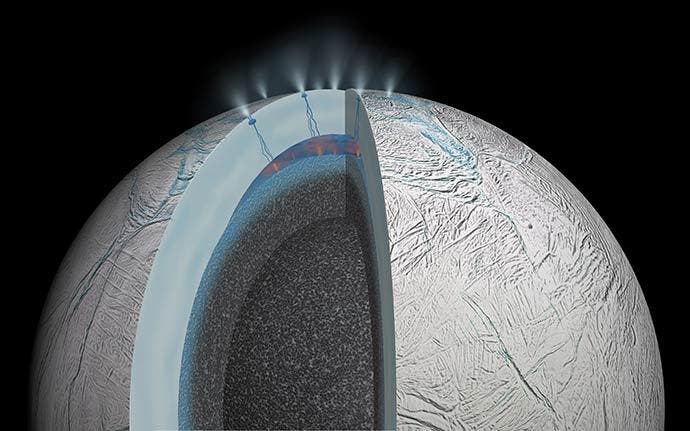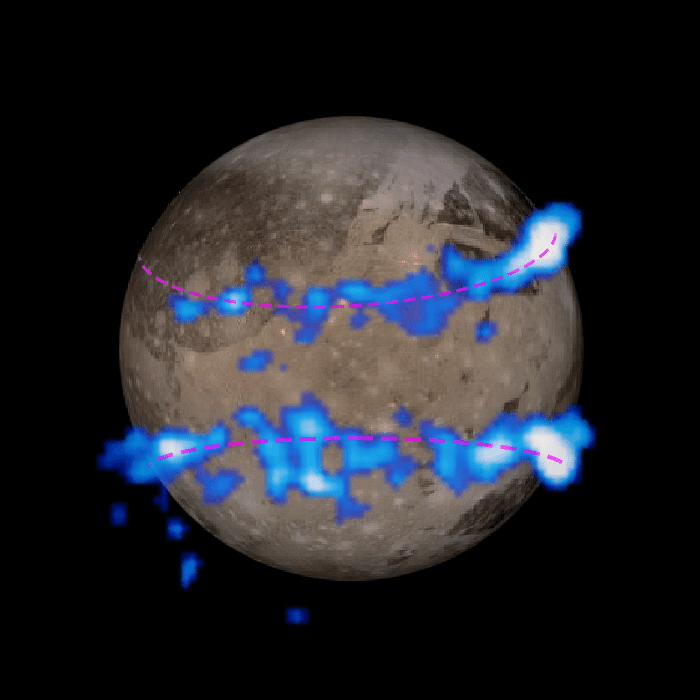Extraterrestrial life in our solar system just got a lot more likely: NASA has found convincing evidence that Ganymede and Enceladus, moons of Jupiter and Saturn respectively, might both harbor salty oceans beneath their frozen surface. Scientists estimate that the oceans are over 50 miles thick (80 km), which greatly increases the chances of alien life.

In order for life to exist (at least life as we know it), there needs to be water; if the water contains salt, it gets even better, because water on Earth evolved from salty water.
“There are possibilities of there being life in the Jupiter-orbiting moon Ganymede”, said the NASA scientists who confirmed to have discovered an ocean beneath Ganymede.
The problem is that the ocean sits under a 95-mile-thick sheet of ice, which makes it incredibly difficult to study. But it’s highly exciting to discover potential life in such an unexpected place.
“After spending so many years going after Mars, which is so dry and so bereft of organics and so just plain dead, it’s wonderful to go to the outer solar system and find water, water everywhere,” Christopher P. McKay, a planetary scientist at NASA’s Ames Research Center in Mountain View, California, told the New York Times.
Enceladus

Enceladus is the sixth-largest moon of Saturn. It was discovered in 1789 by William Herschel, but very little was known about it until the Voyager fly-bys in the 1980s. We recently learned even more about it thanks to the Cassini spacecraft. We know that it has a type of tectonics, geysers, and there were some indications that it has an ocean under all its ice.
Because hydrothermal activity (such as the geysers) on Earth occurs when seawater infiltrates and reacts with a rocky crust, researchers concluded that this must also be what is happening on Enceladus. This theory was further supported with the discovery of methane plume over the moon’s south pole and microscopic granules of silica, which are the building blocks of many rocks on Earth.
“It’s very exciting that we can use these tiny grains of rock, spewed into space by geysers, to tell us about conditions on — and beneath — the ocean floor of an icy moon,” Sean Hsu from the University of Colorado at Boulder and the lead author of the paper published in the journal Nature, said, in a statement.
Ganymede

Ganymede is just as interesting – it is the largest moon of Jupiter and in the Solar System, and the only moon known to have a magnetosphere. It’s this magnetosphere that actually helped scientists, because tocean interferes with the magnetic field, reducing the rocking of the auroras by 4 degrees. To have this kind of effect on the magnetic field, scientists estimate that the ocean is 60 miles thick. Because of its proximity to Jupiter, Ganymede’s magnetic field is affected by the planet’s, rocking it back and forth – this movement generates internal heat which melts the ice and creates a liquid ocean under the surface.
“Because aurorae are controlled by the magnetic field, if you observe the aurorae in an appropriate way, you learn something about the magnetic field. If you know the magnetic field, then you know something about the moon’s interior,” Joachim Saur from the University of Cologne in Germany, and the lead author of the paper, said, in a statement.






